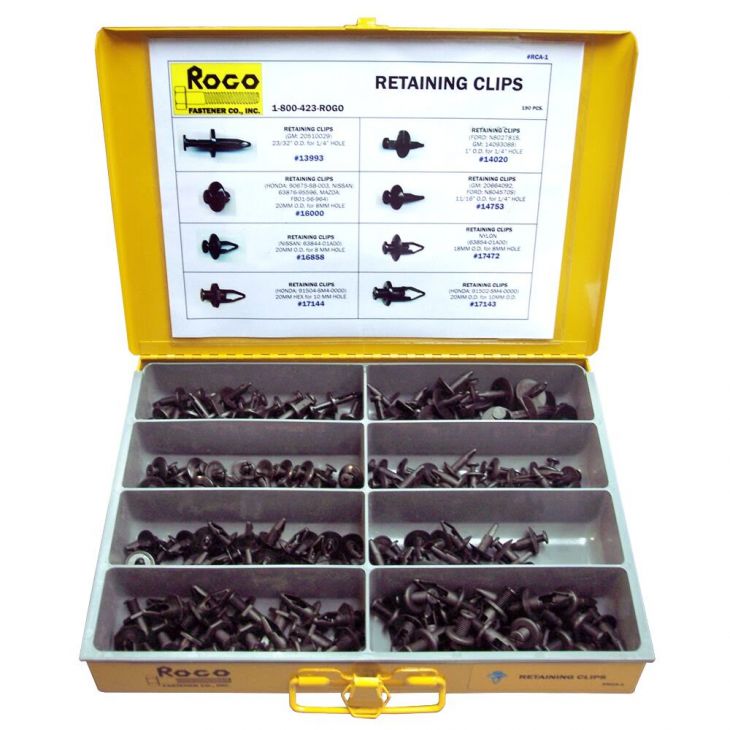Blog
A Guide to Automotive Clips & Fasteners: Types & Materials

Well-made vehicles may seem like seamless units of engineering, but under the surface, there are hundreds of automotive clips and fasteners that are holding everything together. Those parts can be tiny, but they do important work to keep cars running as they should. There is a type of fastener for nearly every job, so take a look at the different options.
Types of Automotive Clips and Fasteners
There are many different types of automotive components that need fasteners, so it makes sense that there are different kinds of fasteners. Using the right one at the right time is critical to completing high-quality repairs. Here are a few of the most common types:
- Bolts and nuts: These threaded fasteners are used to hold together two or more pieces of metal or other hard materials. Bolts have a head on one side and threads on the other and the nuts are threaded on the inside to fit. They work as a unit to secure the parts in place.
- Screws: Screws have threads like bolts but feature a pointed tip that is able to pierce different materials.
- Clips: Clips are used to hold together two or more pieces of material but they normally don't go through the material the way bolts and screws do. They are often used to fasten trim panels and other components.
- Clamps: Clamps are similar to clips but they are stronger. Mechanics use these when a lot of force is needed for a secure hold on parts such as pipes and hoses.
Materials for Automotive Clips and Fasteners
Just as there are different kinds of fasteners in a car, there are also different materials that can be used. These materials are all well-suited to perform different but equally important tasks:
- Metal: Metal is the most durable material used for automotive clips and fasteners. It is strong and can withstand high temperatures. Some types, including stainless steel and aluminum, are also resistant to corrosion in the right environments.
- Plastic: Plastic may seem too lightweight to use as a car fastener, but it is actually very useful. Plastic is easy to mold so clips and fasteners can be made in the exact shape needed. This material works well in parts of the car that aren't exposed to engine heat.
Choosing the Right Automotive Clips and Fasteners
Using automotive fasteners and clips correctly means knowing when to use which type. As you choose, consider a few things. Think about the application for that particular fastener, including the type of materials you are fastening together. Bolting together metal pieces near the engine calls for a different clamp than you would use on a door panel. You should also keep in mind any elements the bolt may be exposed to so you can choose the proper material.
Get the Automotive Clips and Fasteners You Need
Automotive clips and fasteners may be small but they play a major part in keeping vehicles running. To get all the parts you need, visit our online store and check out the selection.
Sources:
- https://www.pemnet.com/company/pem-blog/6-types-of-automotive-fasteners-and-when-to-use-them/
- https://www.rapiddirect.com/blog/types-of-automotive-fasteners/
- https://www.fictiv.com/articles/types-of-automotive-fasteners-explained
- https://carstrucksroads.com/automotive-clips-and-retainers/?expand_article=1
- https://www.corrosionpedia.com/why-is-stainless-steel-corrosion-resistant/2/2457
- https://www.motortrend.com/how-to/engine-fasteners-depth-look-keeps-car-together/
